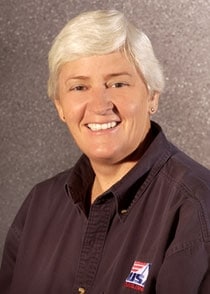
Last October, Janet Baxter, 46, was elected president of US SAILING, replacing Dave Rosekrans, who retired after a three years at the helm. A certified judge and member of Chicago YC, Baxter has volunteered for US SAILING since 1987, with stints on the One-Design Class Council, General Services and Budget committees, and as a board member and vice president. Baxter raced dinghies at the University of Puget Sound and now sails Etchells, Tartan Tens, and bigger boats. Editor John Burnham interviewed her after her election. (A shorter version of this interview appears in Sailing World’s Dec./Jan. issue.)What’s the most important thing you plan to focus on as president? **Membership, membership, membership. Our mission is to touch sailors, and the more sailors we touch the better job we can do. Membership is our report card: if we’re doing a good job people will sign up; if we’re not, then they won’t. Membership also has a fairly significant financial impact. **Why should sailors be proud to be members of US SAILING?It’s the only organization in the U.S. that supports sailors in all areas of sailing, whether it’s learn to sail, or the top-end Olympic, or anywhere in between. The strength of the organization is that it’s very, very broad. We have different people working on different projects simultaneously. For example, in the race-administration area–which is our bread and butter–they’re looking at having fewer appeals committees. This would provide faster justice and better committees, because each committee would have more cases and would get more practice at hearing them, instead of hearing just one or two cases a year. It would also help us train and identify who’s really good to be on our top-level appeals and rules committees. Right now we have some of the top rules guys in the world, and we’re not going to let them go, but it sure would be great to have a few more.Do you see changes in US SAILING’s relationship with regional and local sailing associations?I hope that we’ll be able to have a clear presence at the local level, providing guidance and also listening, particularly in terms of judging and race administration, but also in the training and instruction areas. Currently we train judges in a certification process, but some people aren’t willing to go through the whole process to help with Wednesday-night races. We’d like to move what we’ve learned about judging to the local level, maybe through interactive training on the Internet. It might be in publications or in seminars. We have a lot of learning that we’ve already done about race management; we have an excellent manual, but a lot of people don’t know it exists and few people will take the time to go all the way through it.You’re the first woman president of US SAILING. Will you be effective in “old boy” sectors of the organization?I’ve been around the organization so long that I almost think of myself as part of the old-boy network. I have not experienced any problems from being a female within this organization.Do you plan a serious effort to restructure US SAILING?Many people, for many years, have commented on how large our board is and how difficult it is to get things done. Clearly there’s room and opportunity for improvement there. Changing the structure is a difficult task because you have to get the people who have the power today, to agree that they won’t have the power tomorrow. That’s difficult, but I was very encouraged that so many people at our last meeting were recognizing the need to change the organization. I don’t know how long it will take, but we’re going to start looking at it.Two or three years from now when you look back on your time as president, what do you hope people will say?I hope people will say they’re proud to be a member of US SAILING and happy to pay dues.









